A few times a season, my sweetie and I like to hear a classical music performance at the Valley Performing Arts Center at Cal State Northridge. When we do, one of my favorite parts of the evening is to visit the wonderful mosaics of musicians playing different instruments that line the wall of Cypress Hall next door. As we walk along the sidewalk that takes us from parking to the music hall, I feel like I’m visiting old friends when we pass by the mosaics, and it always adds to my generally-already-upbeat pre-concert mood.
Take a moment to look at them carefully yourself, and see what you observe about them. Then read my comments at the end. (The titles in the captions are my made-up interpretations.) If you want to get the overall picture first, check it out here on Google street view. The link should open in a new tab and go straight to the view of the wall with the mosaics.
Here are all eight, as they appear left to right, individually and close-up. Click any of them to open the image larger in a new tab.
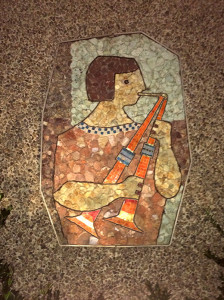
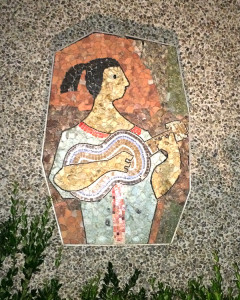
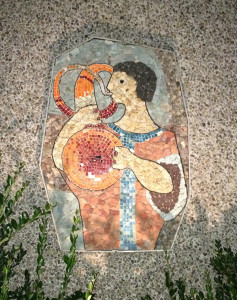
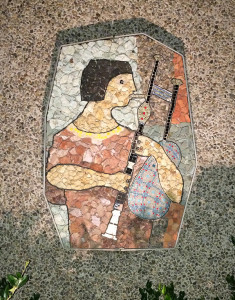
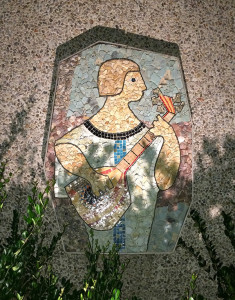
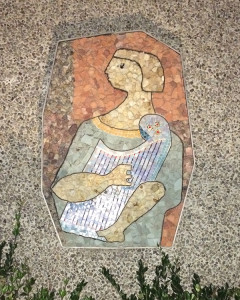
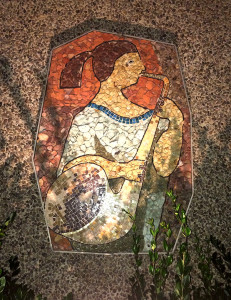
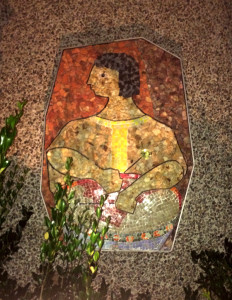
I love how they are all stylized with a distinctively mod, midcentury feel. These are artistic abstractions in the true sense of that term. The real meaning of abstract is that a thing (an image in this case) is reduced, simplified, and stylized from something else. The word abstract is thrown around a lot these days, where in most cases the user should be told, “that word…I do not think it means what you think it means.” I also enjoy the ambiguity of some of the instruments — it’s part of the stylistic theme. It doesn’t matter all that much whether it’s a zither or a harp or a lyre. It stands in for that family of plucked, stringed instruments.
Did you notice the shape of the frames around the mosaics? It is the same for all of them, only it is mirrored in some of them. This mirroring, along with the eccentric shape of the frame, lends a seeming randomness that enhances and complements the stylized geometries of the images themselves.
What about the colored stones and tiles that make up the images? I hope the quality of the photos doesn’t obscure this aspect of the works. They are mostly composed of colored, irregularly shaped stone chips, but the instruments are all made of square little glazed tiles, as are the neck bands and front plackets of the musicians’ costumes. This makes these elements stand out with a greater spark of color and crispness. This was a deliberate choice on the part of the artist, the recognition of which also adds to the viewer’s appreciation of the set as a whole.
I hope you enjoyed this little tour and discussion of an all too rare example, but a really good one nonetheless, of the use of pictorial art to enhance modern architecture. I dream of one day being asked by a client to incorporate this kind of pictorial mosaic art into one of my designs — I think that’s one of the reasons I so enjoy visiting with my Mod Mosaic Musician friends when I go to the concerts.
What did you notice or especially enjoy about them? Let me know in the comments!
Want to follow my adventures in architecture in (almost) real time? Check out my Instagram account and follow me here: http://instagram.com/architectearl
You can also follow Parson Architecture on Facebook here: https://www.facebook.com/ParsonArchitecture
Sign up to get weekly architecture news and inspiration from the Parson Architecture blog delivered to your email inbox here: http://www.parsonarchitecture.com/signup. We’ll never share your information, and you can unsubscribe at any time.
Are you considering building a house, soon or someday? I’ve created a free guide to help you find the right architect for you. You can download it here.
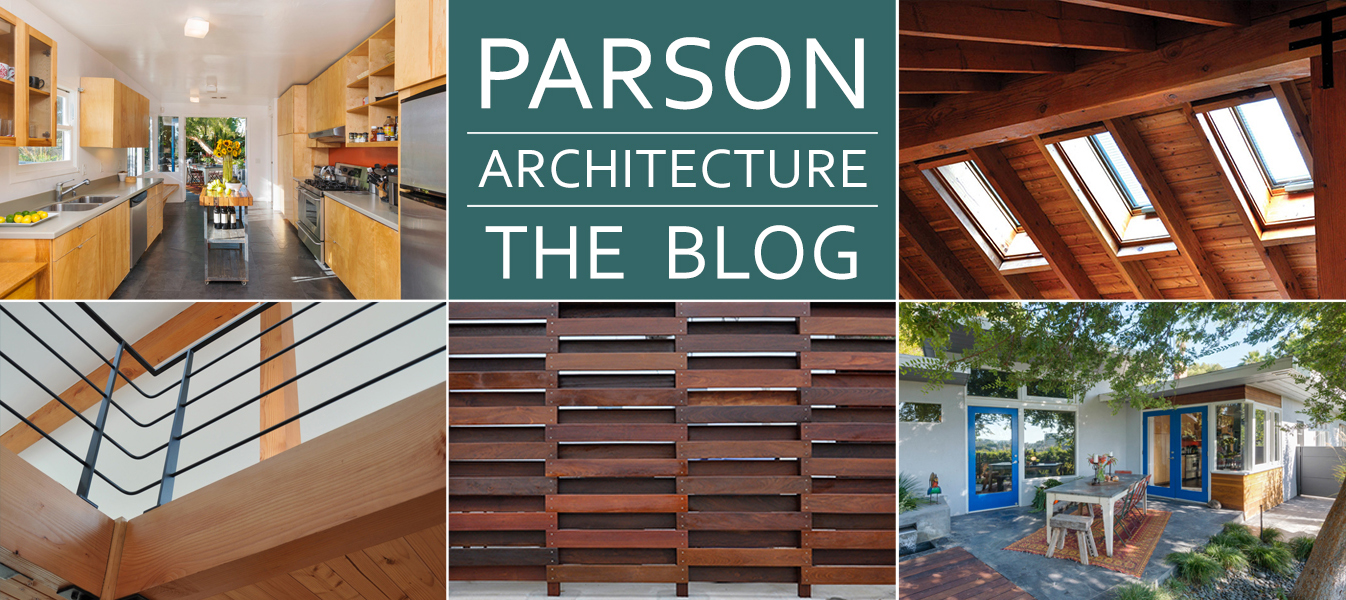
I have not been to VPAC yet but now I want to just to see these great mosaics in person. The futuristic horn reminds me of an instrument played by the band in the bar on Tatooine in the first Star Wars film. I think the saxophone is my favorite. The way the tiles are used to represent specular highlights on the shiny instrument is very nice.
In some ways these abstract drawings remind me of the artwork of Farther Maur van Doorslaer, a Belgian monk whose artwork was turned into ceramics at St. Andrew’s Abbey in Valyermo, California. Features are reduced in the representation to highlight essential features. You can see the ceramics here – https://www.monksofvalyermo.com/SearchResults.asp?Cat=148
Architectural representation before the widespread use of computers used abstraction to convey the essential features of a design idea. Now photo-realistic renderings show the building as it will appear but they fail to point out what is really important to pay attention to. These mosaics show that sometimes drawing less means conveying more.
I know exactly what you mean about the so-called photo-realistic rendering trend. I think it’s an important part of the role of the artist, in any medium, to edit and essentialize the content of a work, in order to more clearly convey meaning. Thus I completely agree with your “drawing less means conveying more.” Spot-on.
I’d love to know who the artist is/was, and when the mosaics were installed. They’re distinctive, weird, and cool.